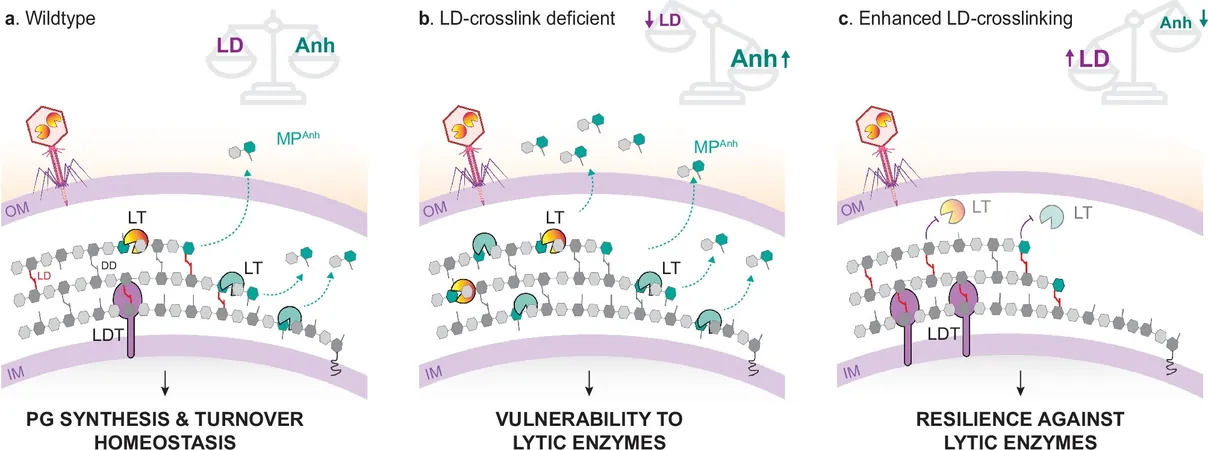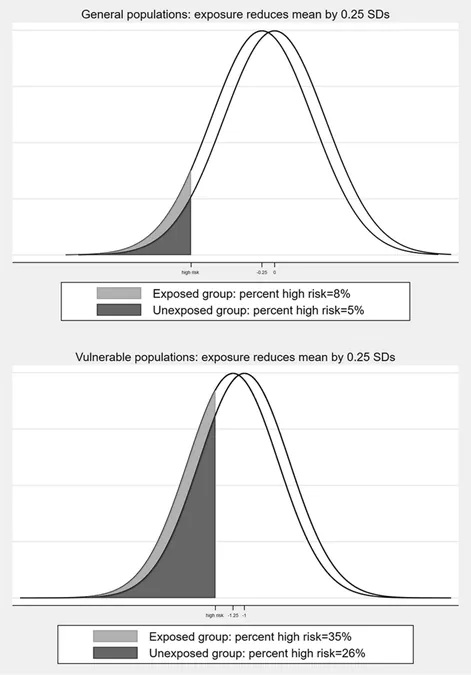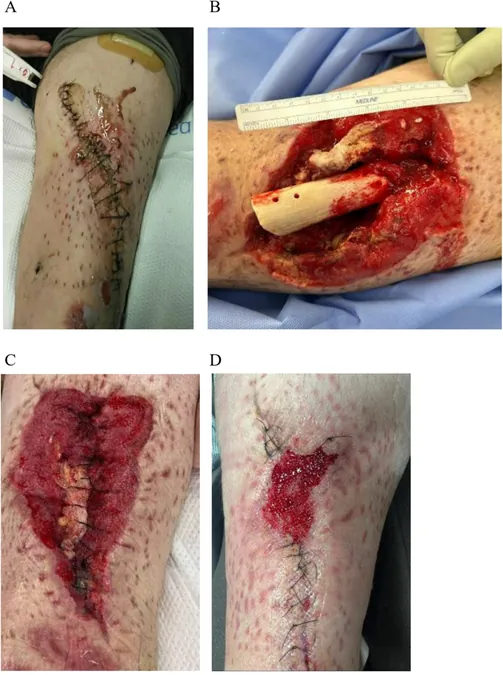
Revolutionary Discovery Reveals Bacteria's Secret Shield Against Attack!
2024-09-26
Introduction
In a groundbreaking study, researchers from Umeå University in Sweden and Cornell University in the U.S. have unveiled a remarkable mechanism that significantly boosts bacteria's defense against environmental threats. This discovery could be a game changer for antibiotic research, paving the way for innovative treatments.
Bacterial Survival Mechanism
The research highlights a fascinating aspect of bacterial survival: the peptidoglycan cell wall, a formidable barrier that enables bacteria to withstand both internal pressure and external aggressors like other bacteria and viruses. Ensuring the stability of this wall is a delicate balancing act, which involves a precise control of enzymes that both construct and deconstruct the wall.
Role of Lytic Transglycolases
Among these, lytic transglycolases play a crucial role by breaking down peptidoglycan chains. Until now, the precise regulatory mechanisms behind these enzymes remained largely a mystery. The team's study, led by Felipe Cava and published in the esteemed journal *Nature Communications*, identifies a specific type of crosslinking in the cell wall, referred to as LD-crosslinking, which effectively curtails the activity of these lytic transglycolases.
Implications of the Discovery
This discovery holds enormous implications. For instance, certain bacteria leverage these enzymes to release cell wall fragments, which can manipulate the host immune response. Intriguingly, other bacteria and viruses use similar mechanisms to annihilate competing bacteria. By finely tuning the activity of lytic transglycolases, bacteria can not only enhance their resilience to immune attacks but also mount counter-attacks against rival microbes.
Conclusion and Future Perspectives
Cava emphasizes the significance of this discovery: “Our findings bridge a crucial gap in understanding how LD-crosslinking contributes to cell wall stability. It reveals how bacteria may fortify themselves against environmental threats, including viral assaults, through a seemingly simple structural change in their cell wall.” As scientists continue to decode the intricate world of bacteria and their adaptive mechanisms, this research offers a promising perspective. By unraveling the secrets of bacterial cell wall homeostasis, we may soon be on the brink of developing cutting-edge antibacterial therapies that could revolutionize the way we combat infectious diseases. This discovery not only improves our understanding of bacterial defenses but could also hold the key to overcoming one of modern medicine's most pressing challenges—antimicrobial resistance.







 Brasil (PT)
Brasil (PT)
 Canada (EN)
Canada (EN)
 Chile (ES)
Chile (ES)
 España (ES)
España (ES)
 France (FR)
France (FR)
 Hong Kong (EN)
Hong Kong (EN)
 Italia (IT)
Italia (IT)
 日本 (JA)
日本 (JA)
 Magyarország (HU)
Magyarország (HU)
 Norge (NO)
Norge (NO)
 Polska (PL)
Polska (PL)
 Schweiz (DE)
Schweiz (DE)
 Singapore (EN)
Singapore (EN)
 Sverige (SV)
Sverige (SV)
 Suomi (FI)
Suomi (FI)
 Türkiye (TR)
Türkiye (TR)